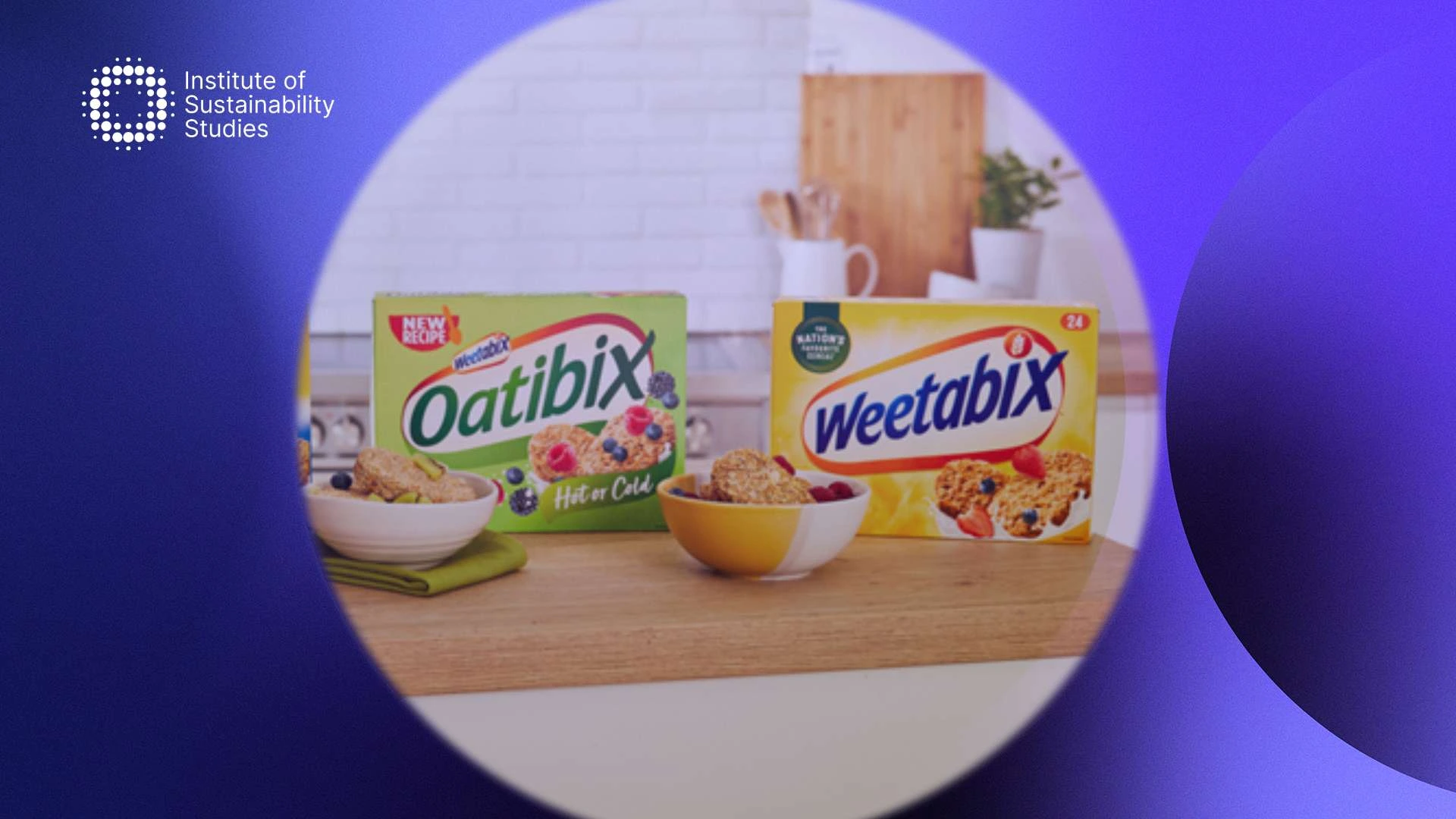Product waste is becoming an unsustainable burden on our planet. To put it into perspective, the fashion industry produces 92 million tonnes of textile waste annually, and it is estimated that 85 percent of all textiles go to landfills each year. This waste contributes to pollution, greenhouse gas emissions, and the depletion of natural resources.
It’s clear the linear “take, make, dispose” model of consumption is problematic and circular product design has emerged as a promising pathway to corporate sustainability. By prioritising material reuse, recycling, and regeneration, circular design helps businesses tackle waste while driving innovation and economic opportunities. Delve deeper into this concept below and how designers can make products with circularity in mind.
Why circularity matters and its role in product design
There are several reasons why circularity is pivotal in product design. The world faces growing resource scarcity, and designing products with circularity in mind can greatly help tackle this. Circular product design promotes using materials that can be recovered and reused, which means we can refrain from extracting finite resources.
The manufacturing and disposal of products is another major case for circular product design. Manufacturing and throwing away products contribute significantly to greenhouse gas emissions, biodiversity loss, and pollution. This type of climate-positive design helps mitigate these effects by minimising energy use, waste, and harmful environmental practices.
There are economic benefits to adopting circular design principles too. Circular product design opens up new business model opportunities like take-back schemes, leasing, and product-as-a-service. These models can create additional value whilst curbing costs associated with production, waste disposal, and material extraction.
Moreover, an abundance of research is sharing that consumers are increasingly looking for sustainable products and to support brands that align with their values. The circular design aligns with this and enables businesses to offer eco-friendly alternatives that resonate with conscious consumers, giving the business a competitive advantage.
Learn to integrate circular economy strategies and create sustainable products
Principles of designing for the circular economy
Designing for the circular economy revolves around creating products, systems, and processes that minimise waste, extend product life cycles, and promote the reuse of materials. Below are some of the key principles of designing products for circularity.
1. Design for longevity
Products should be designed to last longer, with a focus on durability, repairability, and reliability. This involves using high-quality materials and modular designs that allow for easy maintenance and upgrades, extending the product’s usable life.
2. Design for reuse and remanufacturing
Products should be created in a way that allows their components to be easily reused or remanufactured. This means designing for easy disassembly and using standardised parts that can be repurposed or upgraded, reducing the need for new resources.
3. Design for recycling
At the end of their life cycle, products should be easy to recycle. This involves using materials that can be fully and efficiently recycled and avoiding the use of mixed or hazardous materials that are difficult to separate. Clear labelling of materials can also facilitate recycling efforts.
4. Use sustainable materials
Materials used in product design should be sourced sustainably, with a preference for renewable or recycled inputs. By reducing reliance on virgin materials and increasing the use of biodegradable or non-toxic materials, the environmental impact of production can be minimised.
5. Design for resource efficiency
Resource-efficient design aims to minimise the use of energy, water, and raw materials during the product’s life cycle, from production to disposal. This principle encourages the reduction of waste in manufacturing processes and promotes the efficient use of resources throughout the product’s life.
6. Create closed-loop systems
Products should be designed to create closed-loop systems, where materials are continuously cycled through reuse, remanufacturing, or recycling. This prevents waste from entering landfills and reduces the demand for new raw materials.
7. Consider modularity and upgradability
Design products in modular units that can be easily replaced or upgraded. This approach allows consumers to swap out components as they wear out or become obsolete, extending the product’s overall lifespan and reducing waste.
8. Design for multifunctionality
Creating products with multiple uses or adaptability for different functions can reduce the need for separate products. This principle promotes the efficient use of materials and reduces overall consumption.
9. Consider the entire life cycle
A circular design approach considers the entire product life cycle from sourcing materials to manufacturing, distribution, use, and end-of-life recovery. Each stage should aim to minimise environmental impact and maximise resource efficiency.
Develop practical skills to embed circular economy practices into your business operations, with a self-paced short course
Key challenges in designing closed-loop products
Designing closed-loop products, where materials are continually reused or recycled within the product life cycle, presents several key challenges:
Material selection and compatibility
Not all materials are easily recyclable or reusable, particularly in complex products made of mixed materials. Designers must carefully select materials that can be efficiently processed within closed-loop systems, ensuring compatibility for reuse or recycling without degrading quality. This limits material options and can make sourcing more difficult.
Design for disassembly
Products need to be designed for easy disassembly so that components can be separated and reused or recycled. However, designing products that can be taken apart easily without compromising durability or functionality adds complexity to the design process and may increase manufacturing costs.
Quality degradation
Many materials, such as plastics or certain metals, degrade in quality after multiple recycling cycles. This makes it challenging to maintain product performance and quality over time, especially in closed-loop systems where materials are continually reused.
Consumer behaviour and use
For closed-loop systems to work effectively, consumers must be willing to return products for recycling or reuse. However, lack of awareness, convenience issues, or insufficient incentives can prevent proper end-of-life management, resulting in materials ending up in landfills instead of being recirculated.
Supply chain integration
Implementing closed-loop systems requires coordination across the entire supply chain, from raw material sourcing to production, distribution, and product recovery. This level of integration can be difficult to achieve, especially when supply chains are fragmented or global, and many partners must adopt the same closed-loop principles.
Technological limitations
The technology for efficient material recovery and recycling may not always be advanced enough to handle certain materials or product designs. For example, recycling electronics or textiles can still be technologically challenging, leading to inefficiencies in the closed-loop process.
Brands leading the way
Several forward-thinking brands are leading the charge in designing products with circularity in mind, focusing on reducing waste, extending product life cycles, and promoting sustainable resource use.
Stella McCartney
Fashion designer Stella McCartney, in collaboration with the Ellen MacArthur Foundation, is pioneering circular fashion. McCartney’s designs feature innovative sustainable materials, and her brand is focused on creating clothes that are durable and recyclable. Her work with the foundation is aimed at developing models for a fully circular fashion industry.
Lush
Lush, the cosmetics company, has long championed circular practices through its packaging-free products, such as solid shampoos and soaps. The brand also encourages customers to return packaging, such as plastic pots, which are then reused or recycled. Lush’s Zero Waste approach exemplifies its commitment to reducing environmental impact through circular product design.
Pentatonic
Pentatonic is a design and furniture brand that creates products from post-consumer and post-industrial waste, such as plastics and textiles. Their furniture is designed to be disassembled and recycled at the end of its life, ensuring a closed-loop system. Pentatonic collaborates with other brands to integrate circularity into their products as well.
Worn Again Technologies
Worn Again Technologies is an innovative materials science brand that focuses on recycling textiles and plastic packaging into virgin-quality new products. Their circular textile-to-textile process enables fibres to be endlessly reused, significantly reducing the need for new raw materials.
Final thoughts
Circular product design represents the future of sustainable innovation. By shifting from linear consumption models to closed-loop systems, businesses can reduce waste, conserve resources, and meet growing consumer demand for environmentally responsible products.
The environmental challenges we face continue to intensify, and adopting circular design principles is becoming a necessity. To gain the skills and knowledge needed to drive this change, consider enrolling in our Certificate in Circular Economy and Sustainable Products course and help lead the transition to a more sustainable economy.
Dive further into the need for a reduction in purchasing over recycling habits with this TRT World TV segment on ultra-fast fashion, featuring Nazia Naheed Husain, Product Manager at the Institute of Sustainability as well as other guests such as Safia Minney, Founder of Fashion Declares and Author of Regenerative Fashion Andrew Leung, Independent China Strategist.
Master the principles of circular economy and sustainable product development in our online, short course
With a strong background in environmental policy, Nazia is dedicated to driving sustainability and fostering partnerships for a brighter and greener future. She actively engages in crafting pivotal policy submissions directed to the European Commission as a member of the Zero Waste Alliance of Ireland.
She supports upcycling initiatives and is an advocate for ‘reduction’ over ‘recycling’ and ‘reuse’.
- Nazia Naheed Husainhttps://instituteofsustainabilitystudies.com/insights/author/nazia/
- Nazia Naheed Husainhttps://instituteofsustainabilitystudies.com/insights/author/nazia/
- Nazia Naheed Husainhttps://instituteofsustainabilitystudies.com/insights/author/nazia/
- Nazia Naheed Husainhttps://instituteofsustainabilitystudies.com/insights/author/nazia/










